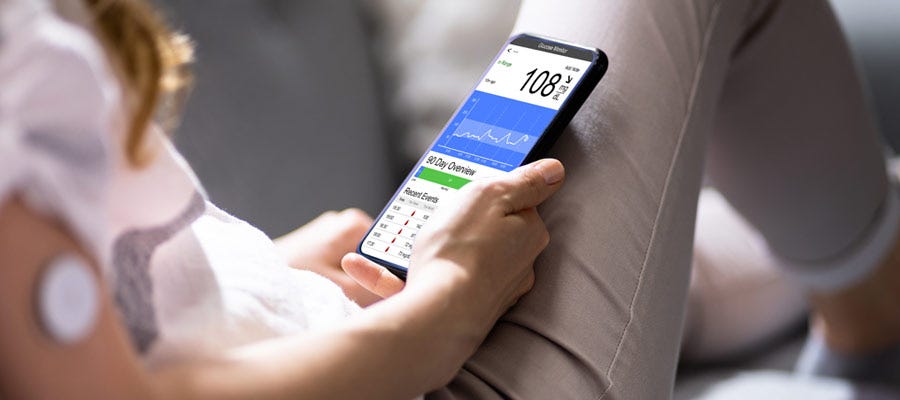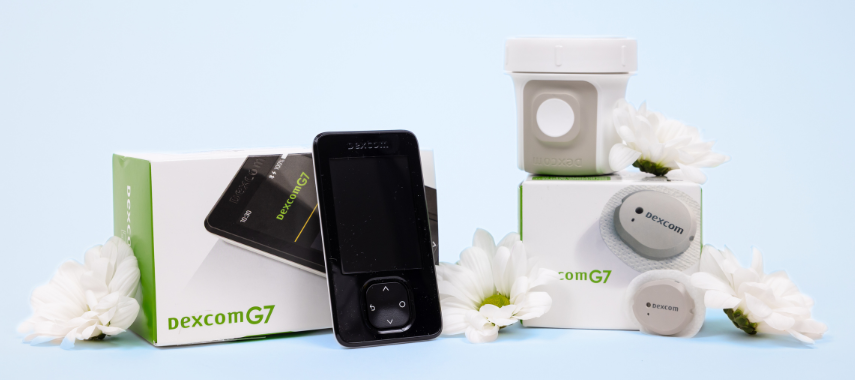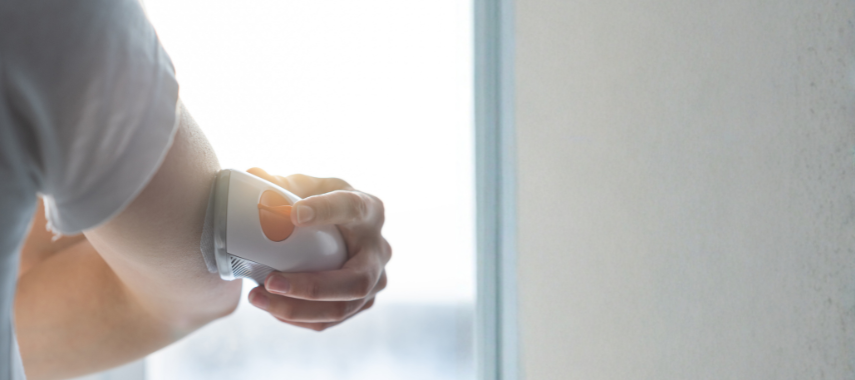Blood glucose meters and monitors are small medical devices that measure blood sugar levels. For people with diabetes, a blood sugar monitoring system is a vital tool to help keep the condition in check. It makes home diabetes management easier by letting people see how diet, medication, insulin and lifestyle affect their blood glucose levels. They can then adjust behavior accordingly, avoiding high or low blood sugar trends that can cause complications.
It’s important to log your glucose readings and share them with your healthcare professional so that they can get a good picture of your blood glucose levels over time and develop an effective diabetes care plan.
Types of Blood Glucose Monitoring Systems
There are a few different types of systems, including blood glucose meters, also called glucometers, and continuous glucose monitors. We’ll explain how these medical devices work and what to consider when choosing the best product to meet your needs.
Blood Glucose Meters (Glucometers)
A blood glucose meter is the traditional method used by people with type 1 diabetes to check their blood sugar levels several times per day. To use a glucometer, you insert a test strip into the device after washing your hands. You prick the side of your finger with a small lancet and collect a drop of blood onto the test strip. After a moment or two, your glucose reading is displayed on the screen. It’s important to note that each glucometer is a bit different, and you should always follow the user manual that accompanies your particular device.
As with any home medical device, there are a lot of choices on the market. It can be confusing to know which one you should buy. In addition to recommendations from your healthcare professional, listed below are a few of the factors you should consider.
Ease of Use
The blood sugar testing process will vary by manufacturer, so be sure to look closely at each one before you buy. For example, how big a blood sample is required for an accurate blood glucose test? Are the test results on the screen easy to read? Is the lancing device adjustable and easy to change? Is it designed only for the fingertip, or can you use it on other areas of the body, like the forearm or thigh? Does it require calibration?
Insurance Coverage and Cost
Most insurance plans and Medicare and Medicaid will cover glucose meters and to some degree, the supplies needed to use them. Beyond the cost of the glucose meter itself, you’ll need to factor in the cost of the blood glucose test strips. If you test your blood sugar multiple times per day, these costs can quickly add up. Your healthcare insurance plan may cover the cost of particular products with a fixed number of strips and supplies each month.
Obviously it will save money if you are able to stick with your insurance provider's preferred products, but there may be times when you need extra supplies or prefer a few special features. Work with your healthcare provider to see what features would be absolutely necessary for you to meet your diabetes treatment requirements, and what would be considered ‘nice to have.’
Special Features
Today’s blood glucose meters are more tech-savvy than in years past, making it a bit easier to keep up with your blood sugar levels over time. There are multiple options for data storage, with some devices capable of holding weeks or months worth of daily glucose readings on the meter itself. Some offer Bluetooth connectivity, which allows your meter to send data to your smart device for storage.
Continuous Glucose Monitors
GCM devices also measure and display blood sugar levels, but they operate without the need for a fingerstick. Instead, these self-monitoring devices use a small sensor placed just under the skin and held in place with an adhesive patch. Glucose readings are transmitted wirelessly to a receiver or a smartphone. In some cases, they may also be connected to an insulin pump. CGM devices can be worn for up to two weeks.
Beyond the obvious advantage of fewer fingersticks, CGM systems are worn continuously day or night, providing many more glucose readings. This makes it much quicker and easier to get a full picture of how well your diabetes is controlled. Having continuous feedback on how your blood sugar is trending and how your diet and insulin is affecting it helps you and your healthcare provider make more informed treatment decisions. As with glucometers, there are a several products on the market with varying functionality and features.
Real-time CGMs
These systems transmit data to your reader or smartphone every few minutes; there’s no need to tell the device to measure and report your blood glucose levels. It all happens automatically and seamlessly.
This technology offers an alert feature that can warn you if your blood glucose levels are headed in a dangerous direction. This helps people avoid hypoglycemia and hyperglycemia events since they can take action ahead of time. The Dexcom G5 and G6 systems are two popular real-time CGMs on the market today.
Flash Glucose Monitors
Like the real-time CGMs, these systems depend on a small sensor placed just beneath the surface of the skin to monitor blood sugar levels. But the flash monitors require an action on your part to ‘push’ the glucose readings to your reader or smartphone. The sensor must be manually scanned, which will prompt it to transmit the information.
This type of CGM may not be suitable for children or people who are unable to scan the sensor, but it’s typically a less expensive, and more than adequate, option for others. Some flash glucose monitors, like the Freestyle Libre 2, also include an alert feature to notify you if your blood sugar is out of range.
Insurance Coverage of CGM
Health insurance and Medicare will cover CGM systems if they are needed to make diabetes treatment decisions. You must have been diagnosed with type 1 or type 2 diabetes, and require frequent adjustments to your insulin regimen. If you think you may be eligible for insurance coverage, speak with your doctor. Only your doctor will be able to determine if you meet the guidelines. Aeroflow can help coordinate with your insurance company and your provider to make sure you receive maximum benefits.
Information provided on the Aeroflow Diabetes blog is not intended as a substitute to medical advice or care. Aeroflow Diabetes recommends consulting a doctor if you are experiencing medical issues or concerns.







